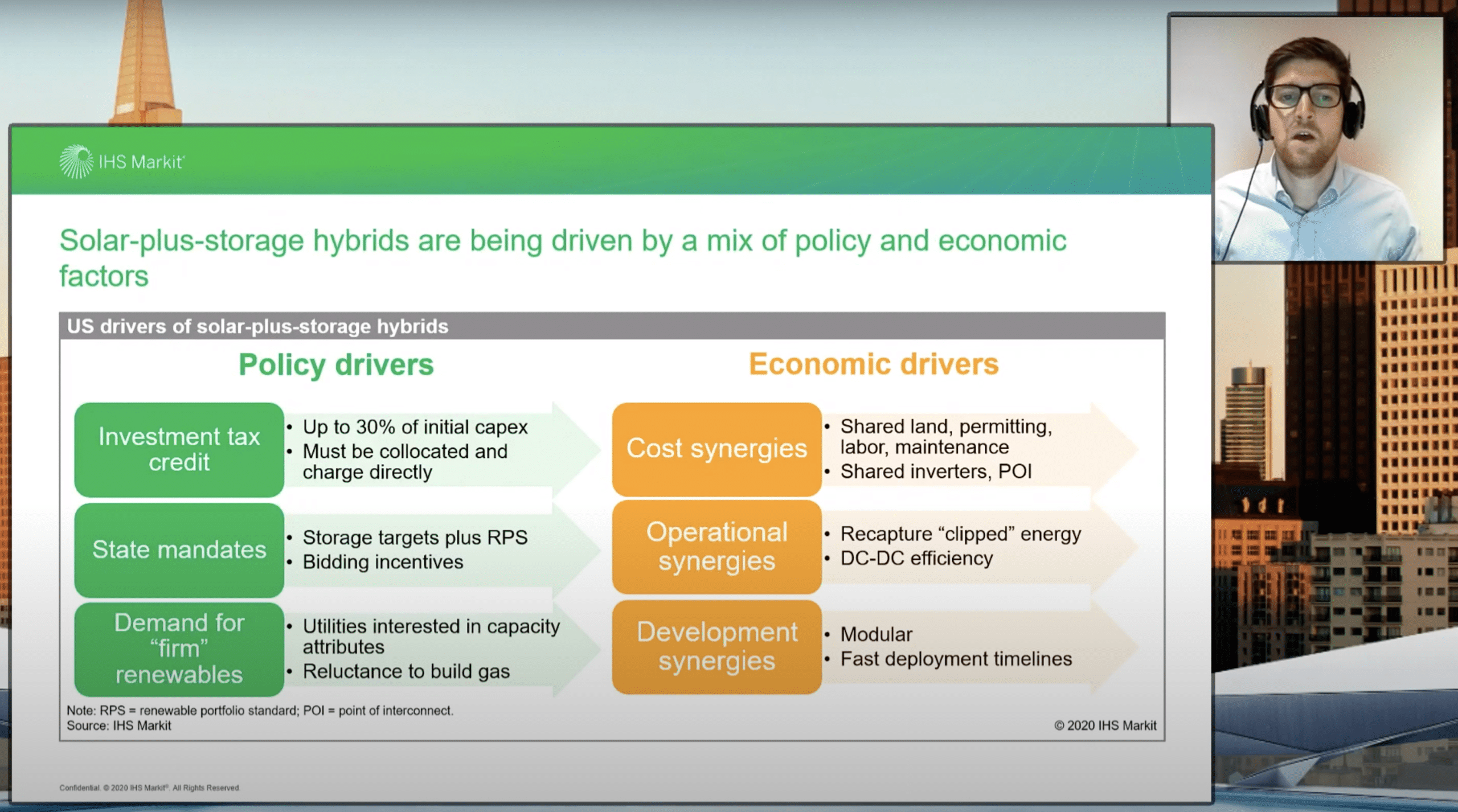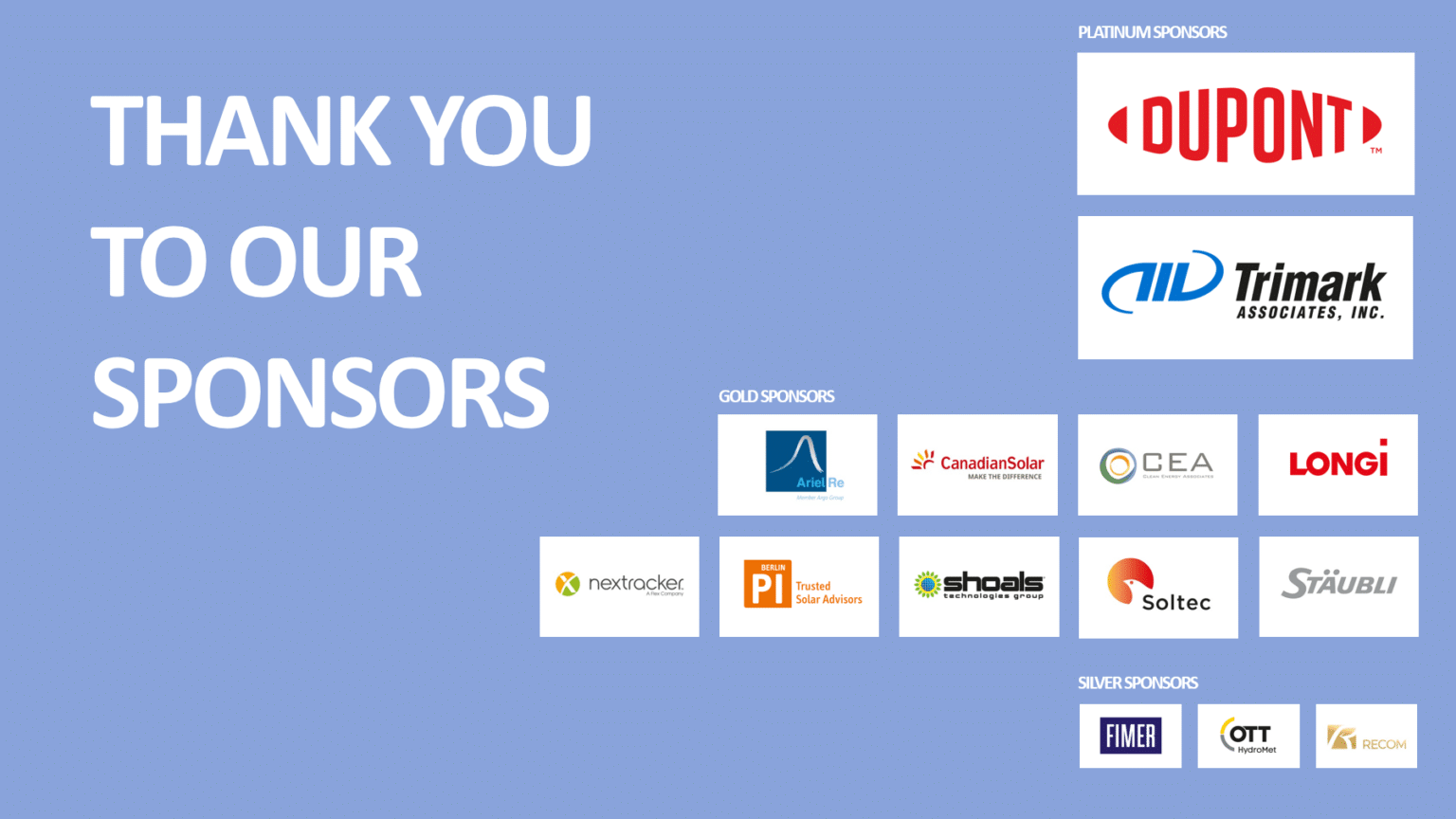Following on from pv magazine’s Quality Roundtable USA on November 17, which focused on how quality can lower solar risk and insurance rates, among other issues, the second roundtable, Advanced technologies, dived into energy storage and PV cell and module developments.
Watch the Advanced Technologies Roundtable video
Opening up the solar+storage discussion, IHS Markit’s Julian Jansen, who leads energy storage research for the independent analysts spoke about the developments witnessed in the U.S. storage space, and what the future looks like (minute 2.40).
While Covid-19 has caused short term disruption, like project delays, the long-term fundamentals of storage remain strong, he said, adding that the behind-the-meter market has been more affected than front-of-the-meter projects.
Overall, IHS projects that there is a market opportunity for around 15 GW of utility scale solar paired with roughly 8 GW of storage until 2023. After this time, based on the current trajectory, and the expiration of the Investment Tax Credit (ITC), it expects a drop off in the market.
See slide below to see what policy and economic factors, other than the ITC, are contributing to the “rapid” growth until 2023.

What storage can learn from solar
While an essential element of a clean energy transition, the storage market’s fast run to adoption must be executed reliably. Storage is really in nascent stages in most of the world, and the technology’s adoption has stepped out of infancy in just a few markets. But it is essential that solar PV and battery storage evolve together.
In the second session, Bernadette Del Chiaro from the California Solar & Storage Association, Bora Akyol from Trimark Associates, Inc., Ian Gregory from PI Berlin and Emily Arnold from 8minute Solar Energy each held presentations to discuss this topic.
Watch the Advanced Technologies Roundtable video
They included a summary of California’s business climate, looking at standards and regulation and the DG opportunity to play a role in grid support services (minute 10.45); the need to develop and introduce open, non-proprietary communication standards (minute 18.04); how battery audits impact storage and storage-plus-solar project risk (minute 26.49); and reviews of modeling, performance and design (minute 33.50).
Preparing for the bigger module future
Aside from ensuring quality and reliability of solar assets – it’s all about bringing down the levelized cost of electricity (LCOE). In light of this, one of the biggest trends among manufacturers is the move to super-sized cells and modules.
To kick off the session, Xiaoting Wang, an energy specialist from BloombergNEF, provided an overview of the current cell and module technology trends (minute 52.56). Overall, she predicted that module prices could drop by another 70% by 2050, while in terms of efficiency, there will be an increase of around 67% over the next 30 years.
2023 to 2030 will be a “period of transition”, she said, from p-type to n-type products, while commercialization of 2-junction cells will be realized post 2030. “We think structure with perovskite on top of n-type silicon has the highest chance,” she added.
In terms of larger cells and modules, they do bring promise for increased energy yields and lower LCOE; but the debate between technologies remains – and the impacts across the supply chain cannot be overlooked.
In a panel discussion (hour: 1.01) between Colin Caufield from Soltec, hongbin fang from LONGi Solar, Thomas Koerner from Canadian Solar, Dean Solon from Shoals Technologies Group and George Touloupas from Clean Energy Associates, preparing for such a future was on the agenda.
Finally, to close the event, Cameron Bard co-founder of Clean Energy 4 Biden – an organization with more than 10,000 members across the clean energy sector that collectively raised $3 million during the U.S. elections – took to the stage (hour: 1.49) to discuss the political matters facing the industry, and the opportunities that await.

This content is protected by copyright and may not be reused. If you want to cooperate with us and would like to reuse some of our content, please contact: editors@pv-magazine.com.








By submitting this form you agree to pv magazine using your data for the purposes of publishing your comment.
Your personal data will only be disclosed or otherwise transmitted to third parties for the purposes of spam filtering or if this is necessary for technical maintenance of the website. Any other transfer to third parties will not take place unless this is justified on the basis of applicable data protection regulations or if pv magazine is legally obliged to do so.
You may revoke this consent at any time with effect for the future, in which case your personal data will be deleted immediately. Otherwise, your data will be deleted if pv magazine has processed your request or the purpose of data storage is fulfilled.
Further information on data privacy can be found in our Data Protection Policy.